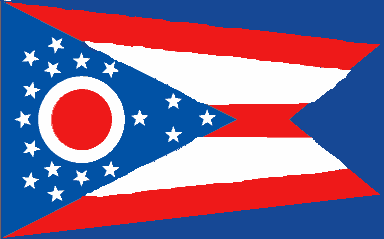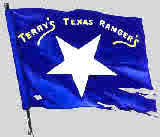 |
 |
|||
The 7th Ohio Cavalry Reenactment unit was formed in June 2009 in Southern California.
History of the 7th Ohio
The 7th Ohio Volunteer Cavalry was organized in Ripley, Ohio on October 3, 1862, under Col. Israel Garrard. The regiment operated in Kentucky, Tennessee, and western North Carolina seeing action in several campaigns and cavalry raids as part of the Army of the Ohio. It was part of the Union forces hastily sent northward in the summer of 1863 in pursuit of Morgan Raiders, seeing action at the Battle of Buffington Island where much of Morgan's command was captured. Colonel Garrard accepted the surrender of the Confederates under Col. Basil W. Duke, although Brig. Gen. John Hunt Morgan escaped with a portion of the raiders. Participating in the Knoxville Campaign in the autumn of 1863, the 7th suffered in a small skirmish in Greeneville, Tennessee, on November 6. Confederate Maj. Gen. Robert Ransom, Jr.And Brig. Gen. William E. "Grumble" Jones dispersed Union cavalry and infantry in the area, seizing numerous prisoners from the 7th Ohio Cavalry and the 2nd East Tennessee Mounted Infantry regiments. In July 1864, the regiment moved from Tennessee into Georgia and joined the forces of Maj. Gen. William T. Sherman during the Atlanta Campaign. It participated in skirmishes and engagements with Confederate cavalry until the fall of Atlanta in late July. The regiment then accompanied the army of George H. Thomas northward back into Tennessee during the Franklin-Nashville Campaign, again engaged in scouting and periodic skirmishes with the Confederates, particularly during the retreat of the beaten Army of Tennessee as it withdrew towards the Tennessee River. In March 1865, the 7th participated in Wilson's Raid into Alabama and was among the troops to enter Selma. It pursued retreating Confederates as far as the Andersonville Prison in Georgia, where news was received that Robert E. Lee had surrendered in Virginia. The 7th OVC was mustered out on July 4, 1865, and returned home to Ohio. During the war, the regiment lost 2 officers and 26 enlisted men killed and mortally wounded and 4 officers and 197 enlisted men by disease, for a total of 229 fatalities.
7th Ohio battles
· Carter's Station, TN (1st), December 30, 1862 · Mt. Sterling, KY, March 24, 1863 · Dutton Hill, KY, March 30, 1863 · Monticello, KY, May 1, 1863 · Rocky Gap, KY, June 9, 1863 · Buffington Island, OH, July 19, 1863 · Carter's Station TN (2nd), September 9, 1863 · Zollicoffer, TN, September 24, 1863 · Blue Springs, TN, October 10, 1863 · Rogersville, TN, November 6, 1863 · Siege of Knoxville, TN, November 17-December 4, 1863 · Bean Station, TN, December 14, 1863 · Blain's Crossroads, TN, December 16, 1863 · New Market, TN, December 23, 1863 · Dandridge, TN, January 16-17, 1864 · Fair Garden, TN, January 27, 1864 · Cynthiana, KY, June 11, 1864 · Siege of Atlanta, GA, July 28-September 2, 1864 · Franklin, TN, November 30, 1864 · Nashville, TN, December 15-16, 1864 · Pulaski, TN, December 25, 1864 · Plantersville, AL, April 1, 1865 · Selma, AL, April 2, 1865 History of the 8th Texas Cavalry aka Terry's Texas Rangers In 1861, Texas went to war and called upon the citizenry to defend her. One of the early groups to answer that call was Terry's Texas Rangers. Organized and led by Benjamin Franklin Terry, a wealthy sugar planter from Brazoria, the regiment mustered in at Houston in September 1861 with just over a thousand men. Originally bound for Virginia, the regiment was placed under the command of Albert Sydney Johnston and traveled to Bowling Green, Kentucky, where they elected their officers and officially organized the regiment. The War department in Richmond designated the regiment as the 8th Texas Cavalry. They had been heralded in New Orleans, and all along their route, as "The Texas Rangers." Technically, they may not have been "Texas Rangers," but this point seems to have been lost to people east of the Mississippi. During the war, they were refered to by a variety of names, including: "the 1st Texas Ranger Regiment"; "Wharton's Regiment"; "Harrison's Regiment"; "Cook's Regiment", "Wharton's Rangers"; "The Rangers"; and even simply as "the Texans." Terry's Rangers first charged into battle near Woodsonville, Kentucky, on December 17, 1861. In this relatively small engagement, they suffered the devastating loss of Colonel Terry. Lieutenant Colonel Thomas Lubbock was elected to command the regiment, but died of illness before assuming the duty. In his stead, John Austin Wharton was elected to the role. Wharton was eventually promoted to General, as was Thomas Harrison, the man who followed him in commanding the Rangers. The Rangers distinguished themselves throughout the war by their skill and willingness to fight. Because of their abilities, and the arms they carried, they were regarded as a "charging regiment," frequently called upon to act as a form of shock troops. They were engaged at Shilo, and provided the main body of troops for the remarkable charge at Fallen Timbers. They led the way when General Forrest, by sheer audacity, took Murfreesboro from a superior enemy force. At Bardstown, it was the Rangers who led Wharton's Brigade into the mass of Yankee cavalry to carry the day. They fought from horseback and on foot. They traveled hundreds of miles behind enemy lines to raid the enemy's sources of supply and communication. They were called upon time and again to provide pickets and scouts for the Army of Tennessee. Alexander Shannon was a Terry Ranger who hand-picked men from the group to form the notorious Shannon's Scouts. Shannon and his men punished Sherman in his march across Georgia and into the Carolinas. The final charge of Terry's Rangers was at Bentonville, North Carolina, on March 21, 1865, when General Hardee urgently called upon Captain Matthews to check the Federal advance. After nearly four years of hard fighting, a shout was raised once again and one hundred and fifty men, all that remained of this gallant regiment, charged into the blue clad infantry and sent them into a panic-stricken retreat. Even when Johnston surrendered his army a month later, many of the Terry Rangers refused to admit defeat and set off in groups hoping to join Kirby Smith's Army and continue the fight west of the Mississippi. Only when word reached them that his army had broken up did they surrender.
8th Texas Battles
Battle of Shiloh
|
||||